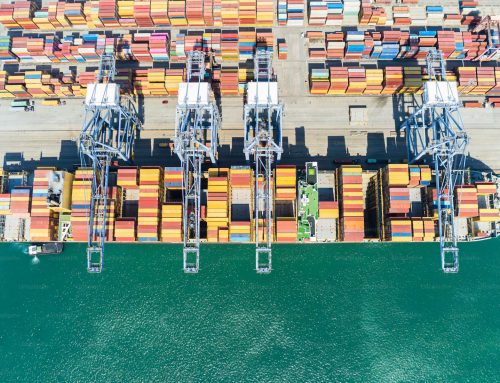We are experiencing the Fourth Industrial Revolution – digitisation, robots, artificial intelligence, 3D printing, and the internet of things (IOT). These transformations have changed the way in which we work. Disruptive innovations are creating new industries and business models, and destroying old ones, the humanitarian sector is no different.
The traditional humanitarian supply chain pushes items first and gradually moves towards a pull strategy once more information becomes available, however, the emergence of cash-based responses (also known as cash transfer programmes, CTPs) enable a pull strategy to be implemented from the beginning. CTPs are mechanisms to provide resources to a population in two main ways – by providing them directly with cash or by giving them vouchers.
CTPs do not incur the transport, warehousing and intensive distribution systems and costs that traditional in-kind aid does. CTPs shorten the logistical supply chain, simplify procurement and remove the need for transport and warehousing considerations which may shrink the humanitarian sector considerably. In short, a shift from material to financial flows diminishes the total cost of aid whilst simultaneously empowering beneficiaries. This has meant that beneficiaries have changed from being passive beneficiaries to becoming active members of the humanitarian supply chain. The functionality of cash transfers is however conditional. For cash transfers to work there needs to be an available market.
In the distribution of CTPs, there is a shift for the role towards an actor that can better handle the financial flow, for example, new telecommunication solutions for cash transfers such as “mobile money” launched by Safaricom have enabled CTPs in various African countries. Funds were transferred to registered numbers which could then be exchanged for actual money or electronically transferred to another phone or used for phone credit through a system they pioneered, the M-PESA system, which does not require a bank account. Concern Worldwide pioneered “mobile money” transfer mechanisms in a humanitarian context in a remote area of Kenya in early 2008.
Like any relief intervention, cash transfers are considered in relation to the context in which they will be used. The local market will be affected by an injection of cash so it is important that the market can absorb the extra capacity without causing soaring inflation to occur. The market must also be able to supply the goods needed by the beneficiaries and in-kind aid is more appropriate anywhere there is ‘supply failure’ which is lack of supply regardless of the existing demand.
There is no straightforward answer regarding the question whether to use cash or food aid as a response tool to food insecurity. However, the argument that in areas where markets are functioning and there is adequate infrastructure and partners to support CTPs, despite some shortfalls, would work better than food aid and should, therefore, be prioritized. Use of CTPs during sudden onset disasters such as floods might not be very effective, unless the response is long-term and markets have normalized.
The challenge for humanitarian agencies in the coming years is to overcome their fears surrounding CTPs, and to implement cash programmes where they are judged to be the most appropriate response. This will require a change in donor policies, but also a fundamental change in the skill set of humanitarian logisticians, who are used to identifying needs and providing commodities and thus to maintaining control over the provision of assistance. A further consequence of CTPs is that agencies must hand over control of aspects of emergency programming to the affected communities themselves.
CTPs alter supply chain design, the role of beneficiaries as well as humanitarian organisations, and change the strategy of aid delivery from push to pull. Perhaps the most important factor is the elimination of many logistical activities that needed to be performed by humanitarian organisations. Delivering cash diminishes the needs for lengthy procurement and assessment processes, pre-positioning, transportation and distribution. This bears the potential of significant reductions in costs for delivering humanitarian aid.




